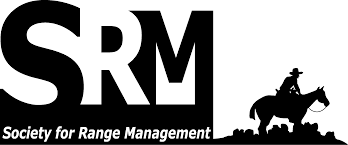Location
The Society for Range Management is the professional scientific society and conservation organization whose members are concerned with studying, conserving, managing and sustaining the varied resources of the rangelands which comprise nearly half the land in the world. Established in 1948, SRM has over 4,000 members in 48 countries, including many developing nations.
SRM’s members are land managers, scientists, educators, students, producers and conservationists–a diverse membership guided by a professional code of ethics and unified by a strong land ethic.
MISSION
Providing leadership for the Stewardship of Rangelands based on sound ecological principles.
VISION
A well-trained and highly motivated group of professionals and rangeland users working with productive, sustainable rangeland ecosystems.
Members:
Resources
Displaying 6 - 10 of 26Ranch Owner Perceptions and Planned Actions in Response to a Proposed Endangered Species Act Listing☆
The Gunnison sage-grouse (GUSG) is an iconic species recently proposed for protection under the Endangered Species Act (ESA). In Colorado's Upper Gunnison River Basin, ranchers own the majority of water rights and productive river bottoms as well as approximately 30% of the most important GUSG habitat. This project used mixed-methods interviews with 41 ranch owners to document how ranchers perceive the proposed ESA listing and how they plan to respond to a listing decision. Results show that ranchers support on-the-ground GUSG conservation but are concerned about listing implications.
Temporal Analysis of Elephant-Induced Thicket Degradation in Addo Elephant National Park, Eastern Cape, South Africa
Elephant-induced thicket degradation in the Addo Elephant National Park (AENP), Eastern Cape, South Africa, was assessed during 1973 and 2010 using multitemporal satellite imagery. Changes in the thicket condition, in relation to the AENP expansion, were analyzed using the Normalized Difference Vegetation Index, postclassification, and landscape metrics. The change detection of land-cover classes was analyzed by postclassification. Landscape-spatial metrics were used in order to gain an understanding of vegetation-fragmentation trends.
Cover Estimations Using Object-Based Image Analysis Rule Sets Developed Across Multiple Scales in Pinyon-Juniper Woodlands
Numerous studies have been conducted that evaluate the utility of remote sensing for monitoring and assessing vegetation and ground cover to support land management decisions and complement ground measurements. However, few comparisons have been made that evaluate the utility of object-based image analysis (OBIA) to accurately classify a landscape where rule sets (models) have been developed at various scales. In this study, OBIA rule sets used to estimate land cover from high–spatial resolution imagery (0.06-m pixel) on Pinus L. (pinyon) and Juniperus L.
Vegetation Responses to Pinyon–Juniper Treatments in Eastern Nevada
Comparisons of tree-removal treatments to reduce the cover of single-leaf pinyon (Pinus monophylla Torr. and Frém.) and Utah juniper (Juniperus osteosperma [Torr.] Little), and subsequently increase native herbaceous cover in black sagebrush (Artemisia nova A. Nelson), are needed to identify most cost-effective methods. Two adjacent vegetation management experiments were initiated in 2006 and monitored until 2010 in eastern Nevada to compare the costs and efficacy of various tree reduction methods.
Monitoring of Livestock Grazing Effects on Bureau of Land Management Land
Public land management agencies, such as the Bureau of Land Management (BLM), are charged with managing rangelands throughout the western United States for multiple uses, such as livestock grazing and conservation of sensitive species and their habitats. Monitoring of condition and trends of these rangelands, particularly with respect to effects of livestock grazing, provides critical information for effective management of these multiuse landscapes.


